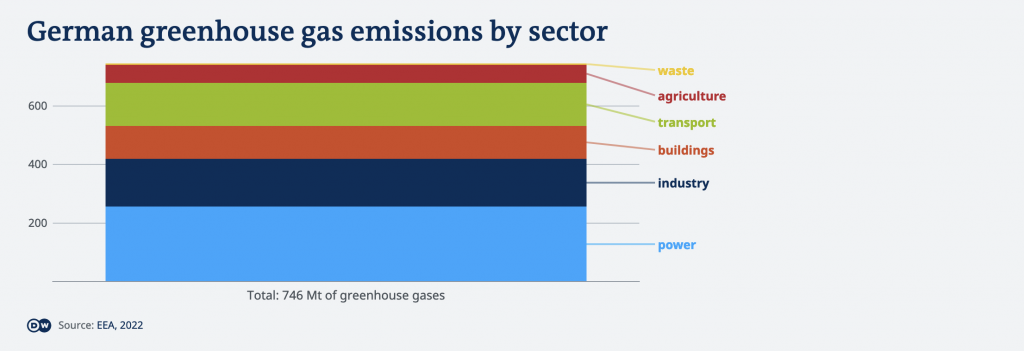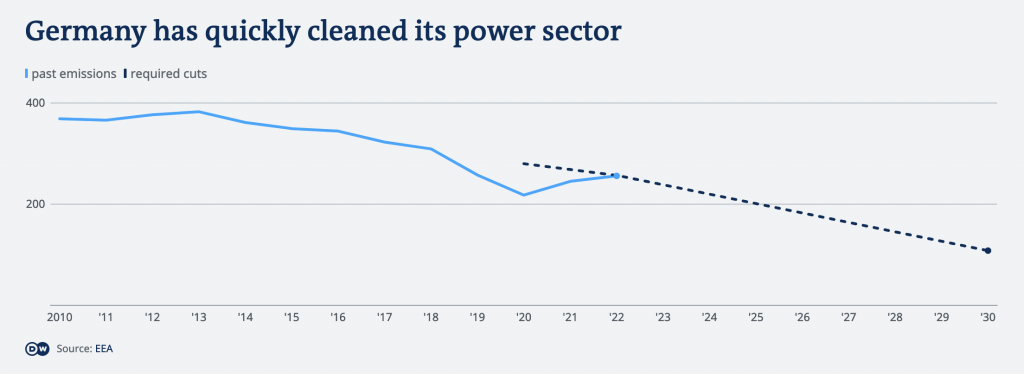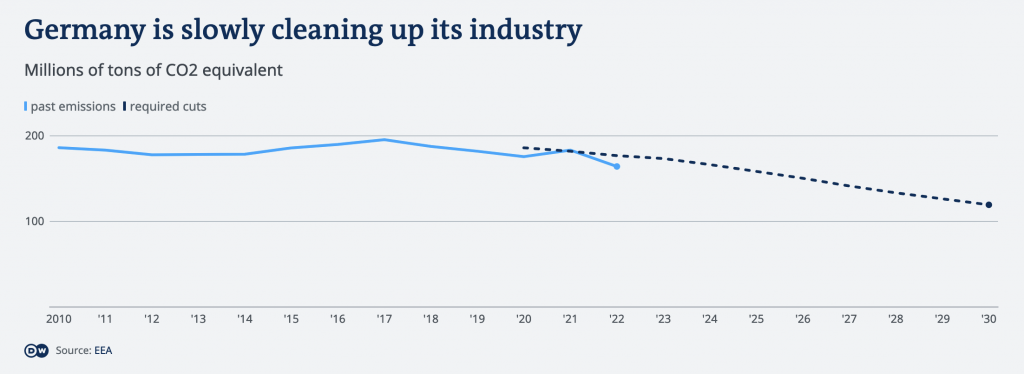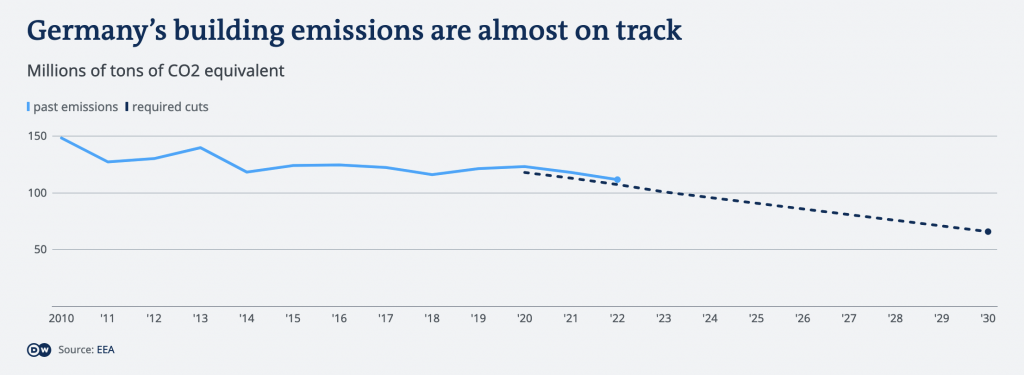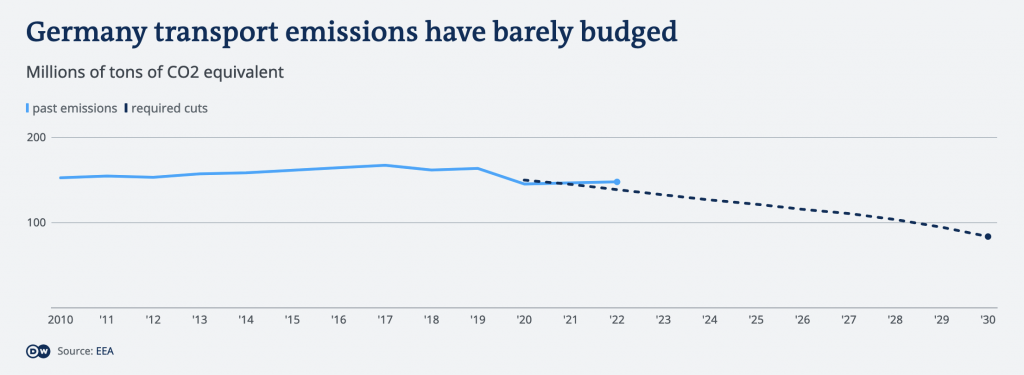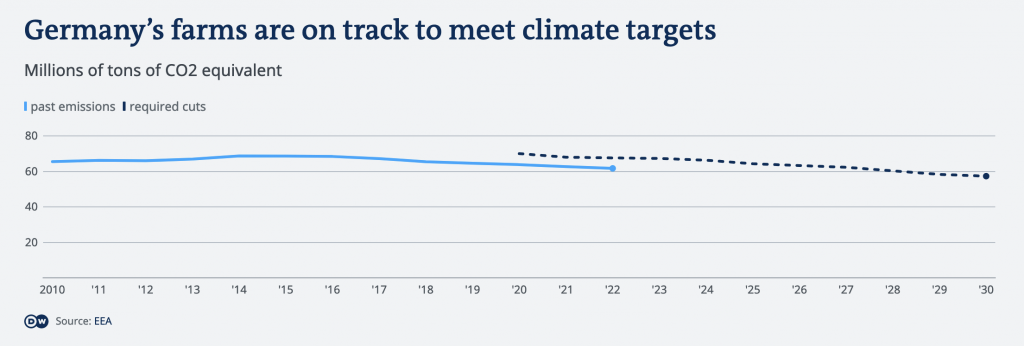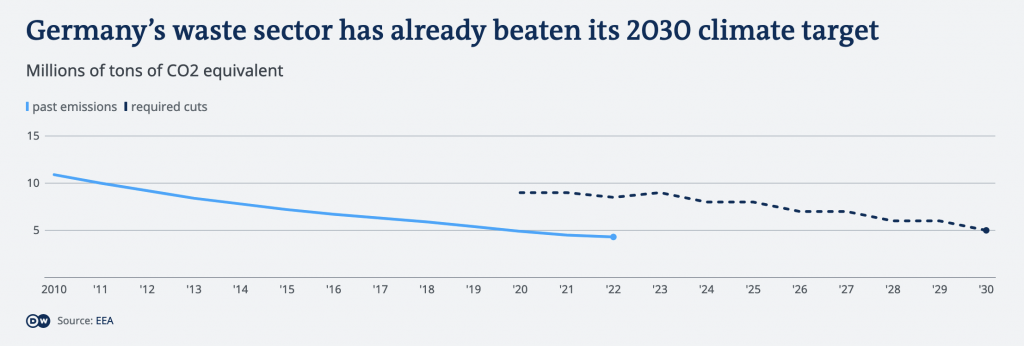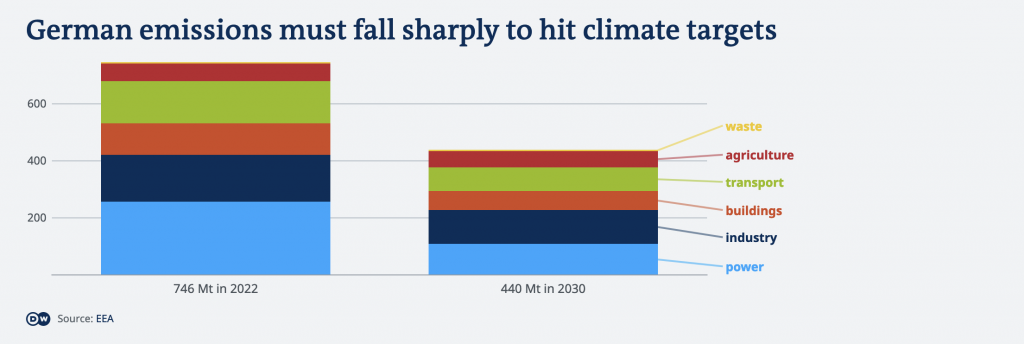How fast is Germany cutting its greenhouse gas emissions?
Europe's biggest polluter is ditching targets in its climate law to cut emissions – after mixed progress toward reaching those goals. The transport sector is struggling the most, while waste has already passed its target.
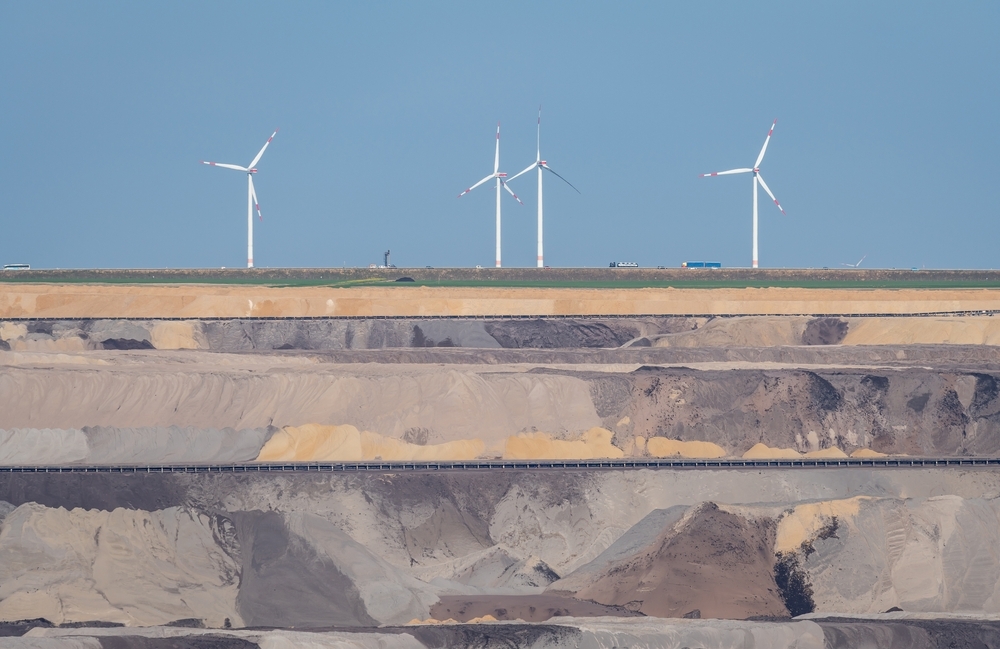
Garzweiler coal mine in Germany (photo: © Milos Ruzicka/Shutterstock)
The German government plans to scrap a key clause in its climate law that binds ministries to slash carbon pollution in the areas they control.
The country is currently obliged by national law to cut greenhouse gas pollution 65 percent from 1990 levels by the end of the decade, with yearly targets for each sector – power, buildings, transport, industry, agriculture and waste.
But after pressure from the market-liberal Free Democrat Party (FDP), a minor coalition partner that controls the finance and transport ministries, the federal cabinet agreed in June 2023 to ditch sectoral targets and instead shoot only for the overarching 2030 target. The landmark law was last rewritten in 2021 after the country’s highest court ruled it pushed too much of the burden of stopping climate change onto future generations.
Scientists fear that easing pressure on individual sectors – letting progress in some compensate for failures in others – will delay fixes and make the 2030 goal harder to hit. In its latest review of the science, the UN-backed research body Intergovernmental Panel on Climate Change (IPCC) found all pathways that limit global warming to 1.5°C need “rapid, deep and in most cases immediate greenhouse gas emission reductions in all sectors.”
As Europe’s biggest economy and polluter, Germany’s progress in cutting emissions is crucial to the success of the European Green Deal – an EU-driven attempt to make Europe the world’s first climate-neutral continent. In 2022, the country still emitted a total of 746 million tons (Mt) of greenhouse gases across six key sectors.
Data from the German Environment Agency show how fast the country has cut emissions in each area of its economy since 2010 and how much further it needs to go to reach its climate goals.
Germany power sector emissions
Germany must cut pollution in the power sector to 108 Mt by the end of the decade. So far, emissions have fallen from 369 Mt in 2010 to 256 Mt in 2022.
The power sector – which generates the electricity used to run everything from kettles to data centers – is the biggest source of Germany’s emissions. It spews almost as much pollution as the next two biggest sectors combined.
But by closing coal plants and building wind turbines and solar panels, the country has quickly cleaned a dirty electricity grid. Germany has beaten its power sector targets in recent years – compensating for slow progress in other areas of the economy – pushed along in part by a drop in economic activity during the COVID-19 lockdowns.
In 2022, after Russia invaded Ukraine, Germany burned more coal to replace a shortfall in imported gas. The sector’s emissions crept up further but were still below the legal limit.
Germany industry sector emissions
Germany must cut pollution in the industry sector to 119 Mt by the end of the decade. So far, emissions have fallen from 186 Mt in 2010 to 164 Mt in 2022.
German industry – which covers everything from producing glass and paper to chemicals for fertilizer – relies heavily on fossil gas. The steepest drop in industrial emissions came in 2022, after tensions with Russia sent gas prices soaring and fears of a shortfall led some businesses to cut production and use gas more efficiently.
Industrial emissions are among the hardest to fix because key chemical processes release CO2. The most promising technologies in the two dirtiest industries – making steel with green hydrogen and capturing carbon from cement plants – are only just being built into factories for commercial use.
Still, some short-term fixes are possible. By increasing efficiency, industrial emissions could fall even before new technologies are ready for the market. Cutting demand for key products – for instance, by making smaller cars or changing building codes to use less concrete – would also help.
Germany building sector emissions
Germany must cut pollution in the buildings sector to 66 Mt by the end of the decade. So far, emissions have fallen from 148 Mt in 2010 to 111 Mt in 2022.
The building sector has failed to meet its targets in the last three years, though its emissions are consistently falling.
Several powerful technologies to clean the building sector exist – from electric-powered heat pumps to wall insulation – but deploying them in millions of homes across the country is trickier.
In recent weeks, political parties have fought fiercely over a plan laid out in the ruling government’s coalition agreement to ban new installations of oil and gas boilers from 2024 in favor of heating systems that run on at least 65 percent renewables. The draft law has now been weakened to allow some new fossil fuel boilers until 2028 and carves out loopholes for burning gases like hydrogen, which can be made cleanly but are in short supply.
Germany transport sector emissions
Germany must cut pollution in the transport sector to 84 Mt by the end of the decade. So far, emissions have fallen from 153 Mt in 2010 to 148 Mt in 2022.
The transport sector has made the least progress in cleaning up. Despite some variations in-between, emissions in 2019 were the same as in 1990 at 164 Mt. They suddenly dropped during the COVID-19 lockdowns, when people were forced to stay home, but have slowly risen since.
The transport ministry has come under fire from activists and scientists for refusing to create a viable plan to meet its goals – a requirement for sectors that miss their targets. Last year, the government-appointed Council of Experts on Climate Change said the transport ministry’s plans were too weak to even warrant a formal assessment.
Germany agriculture sector emissions
Germany must cut pollution in the agriculture sector to 57 Mt by the end of the decade. So far, emissions have fallen from 66 Mt in 2010 to 62 Mt in 2022.
Germany’s agriculture sector has met its climate targets for the last three years, though emissions are falling slowly.
Farms have many sources of pollution beyond the fossil fuels burned to run machines. Ruminant animals belch methane, a gas 80 times stronger than carbon dioxide over a 20-year-period, and nitrogen-based fertilizers lead to nitrous oxide, which is 273 times stronger. Changes in how land is used – particularly turning forests to farms – release CO2 and stop nature from sucking as much out of the atmosphere.
While the emissions from agriculture are hard to bring down to zero from a technological perspective, changes to demand can have an outsize impact. Wasting less food at home – and tightening rules to stop losses further up the supply chain – reduces the amount of land that must be dedicated to farming. Eating less meat and dairy does the same and reduces the number of animals that need to be reared.
Germany waste sector emissions
Germany must cut pollution in the waste sector to 5 Mt by the end of the decade. So far, emissions have fallen from 11 Mt in 2010 to 4 Mt in 2022 – and so has already passed its legal target.
Waste makes up only a small fraction of Germany’s emissions. Still, food rotting in landfills releases methane, and rubbish burned in waste incinerators releases CO2. In densely packed cities, connecting apartments to district heating powered by waste incinerators could be a useful fix if the carbon can be fully captured and stored.
What’s more, strategies to create less waste can have a bigger effect on the climate by avoiding needless production of goods.
Germany’s 2030 emissions target
In 2030, under the current law, Germany should emit no more than 440 Mt of greenhouse gases – down from 746 Mt in 2022.
By that point, power sector emissions should have sunk enough to make it the second-biggest contributor behind industry. The two sectors together would be responsible for about as much as the transport, building, agriculture and waste sectors combined.
But even those levels of pollution are not enough to keep the planet from warming by 1.5°C, according to Climate Action Tracker, a project from two German environmental research organizations. To do its fair share, Germany would need to cut its emissions at least 69 percent – rather than 65 percent – and give more money to other countries that have polluted less.
Edited by Jennifer Collins and Gianna-Carina Grün.
For data, code and methodology behind this analysis, see this repository.
Original source: https://www.dw.com/en/germany-greenhouse-gas-emissions-progress/a-66082833

